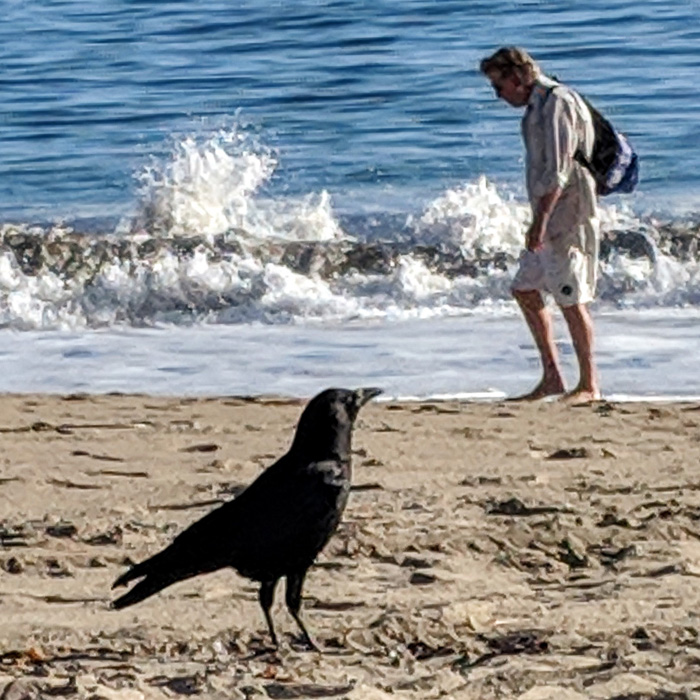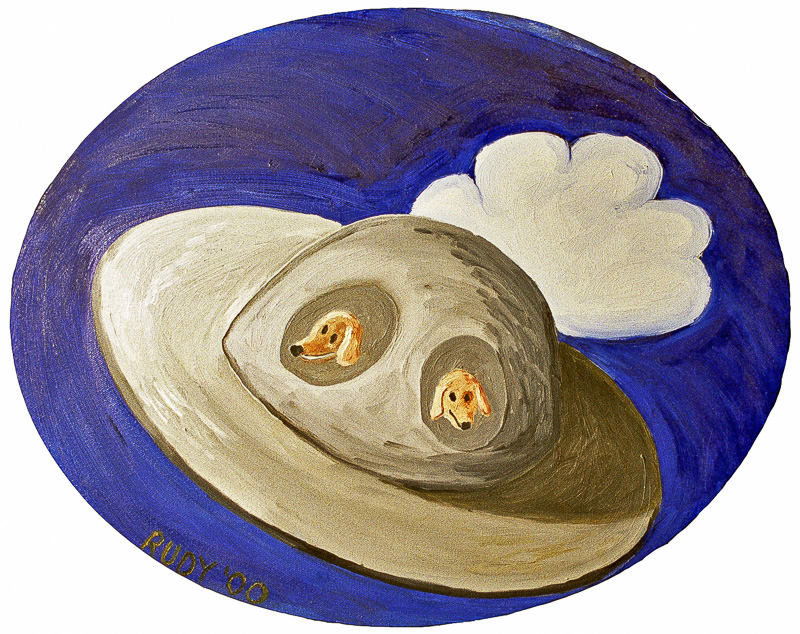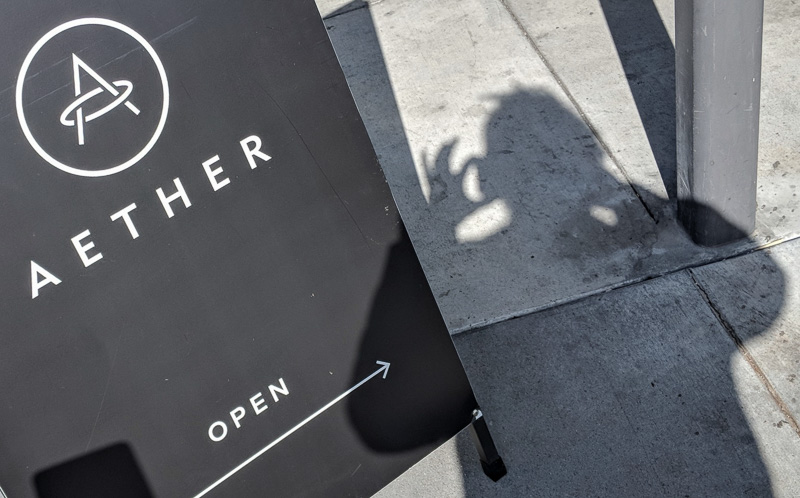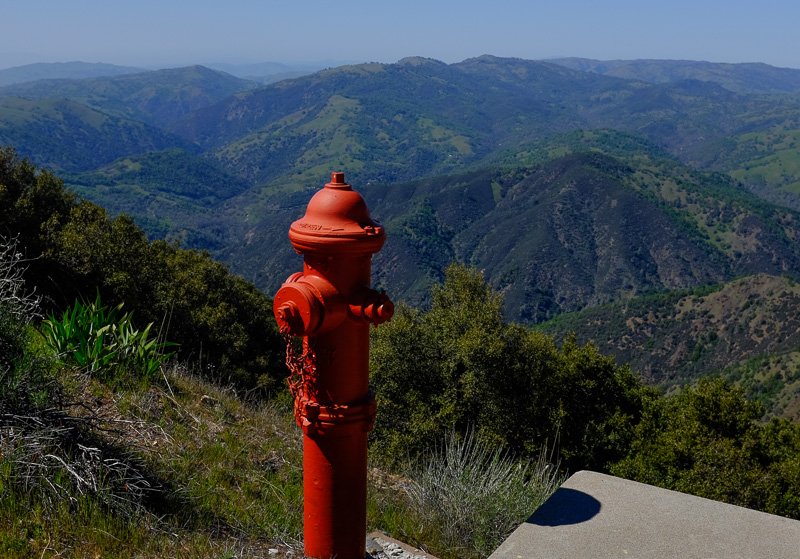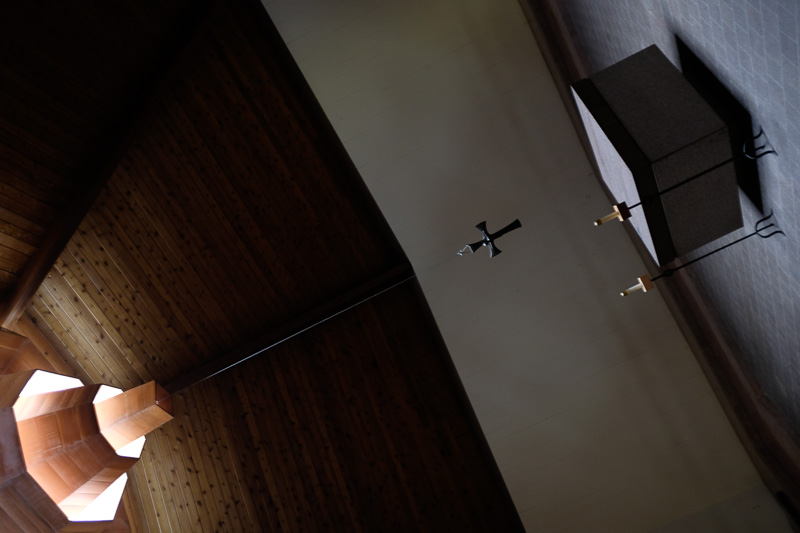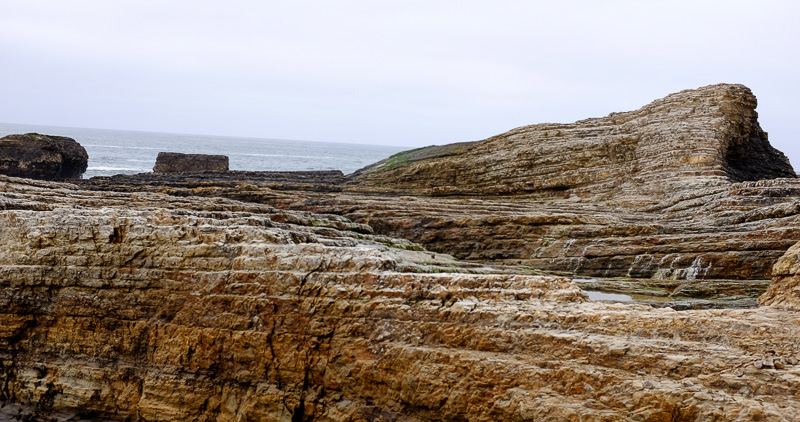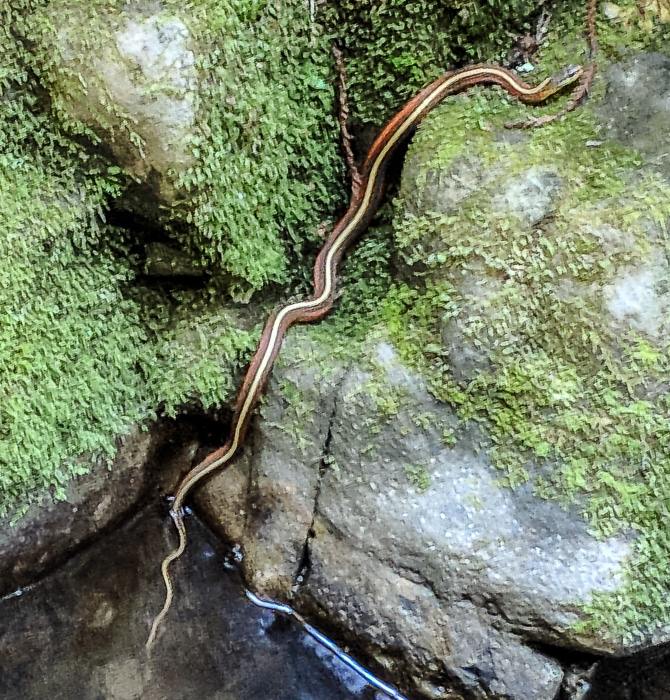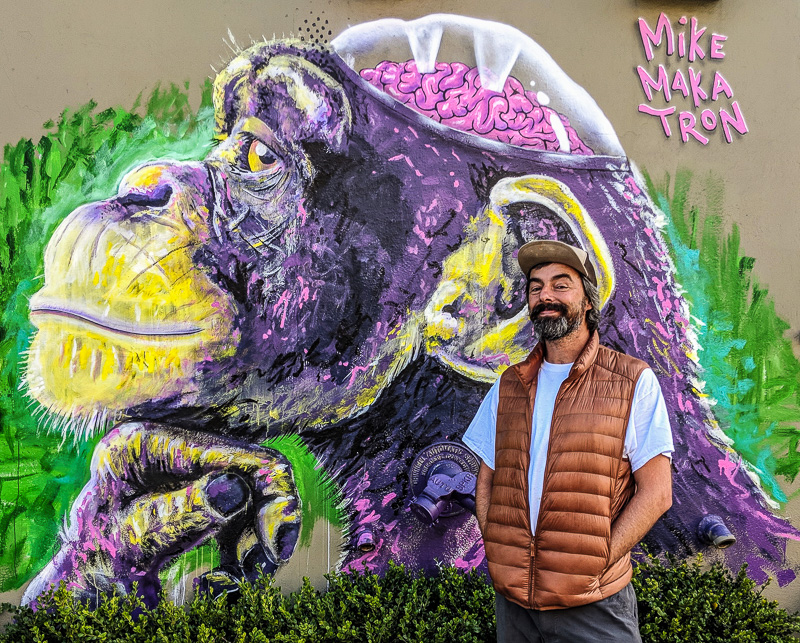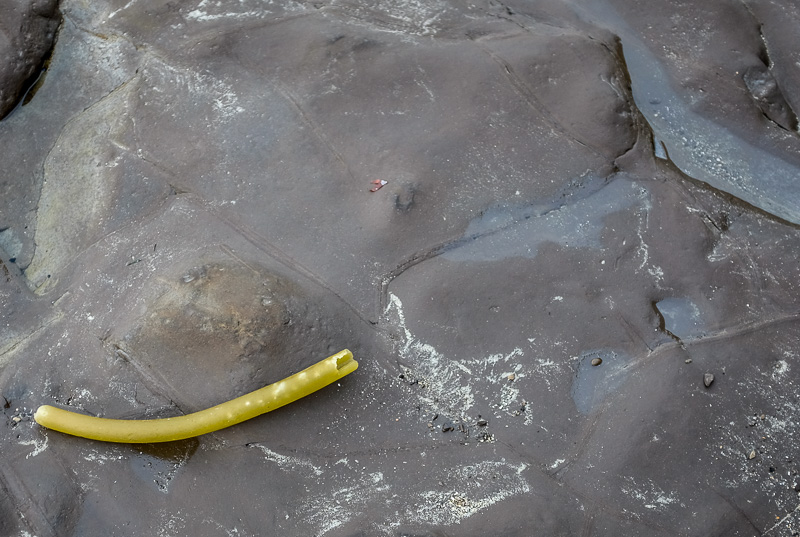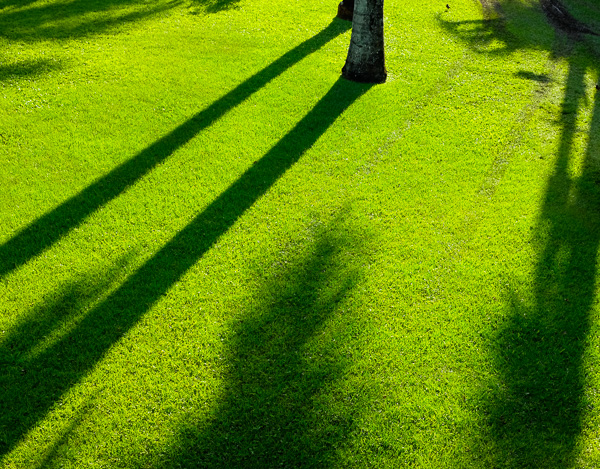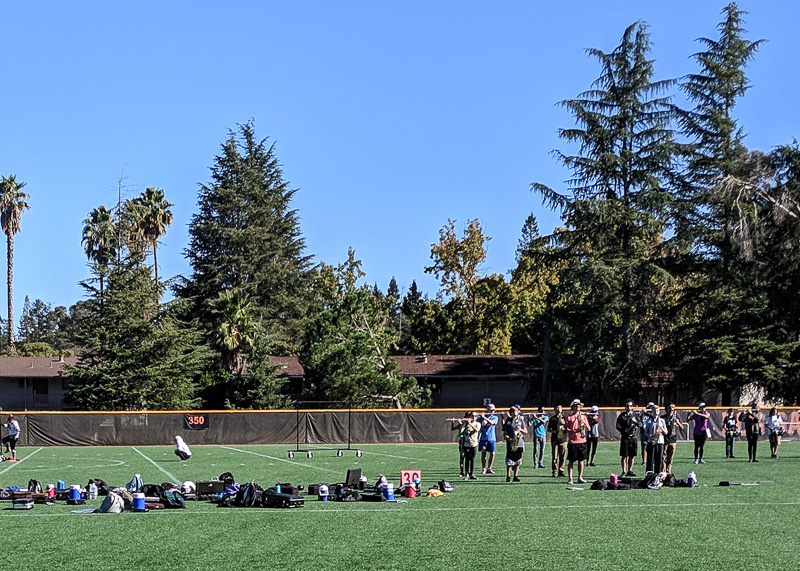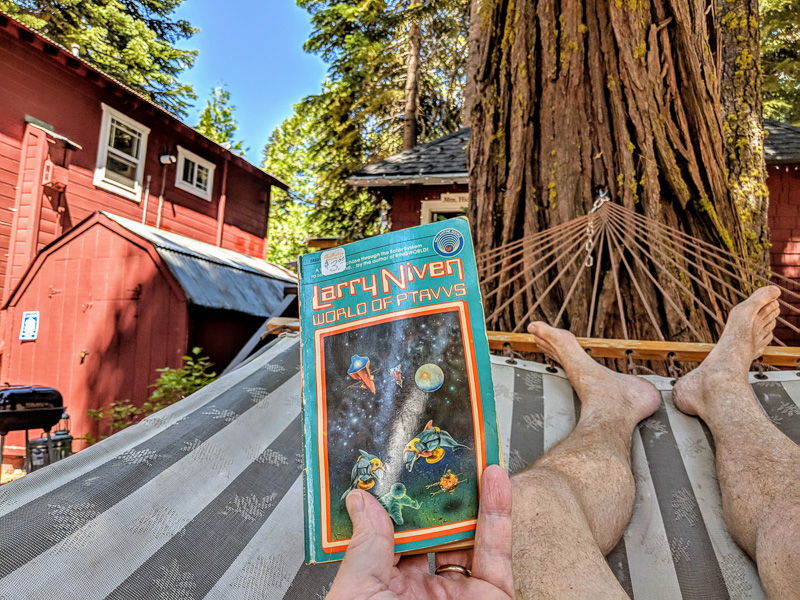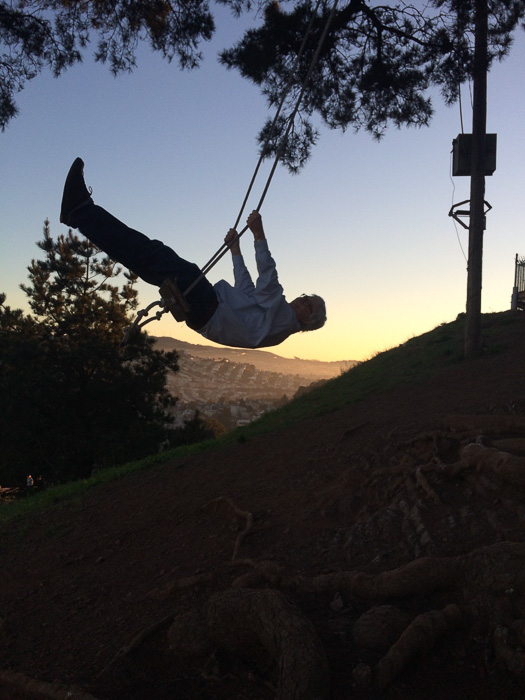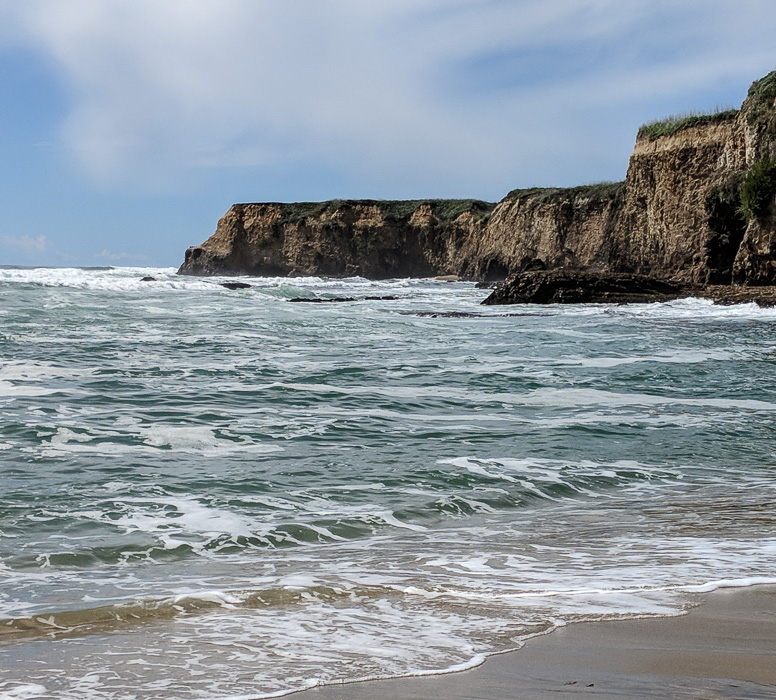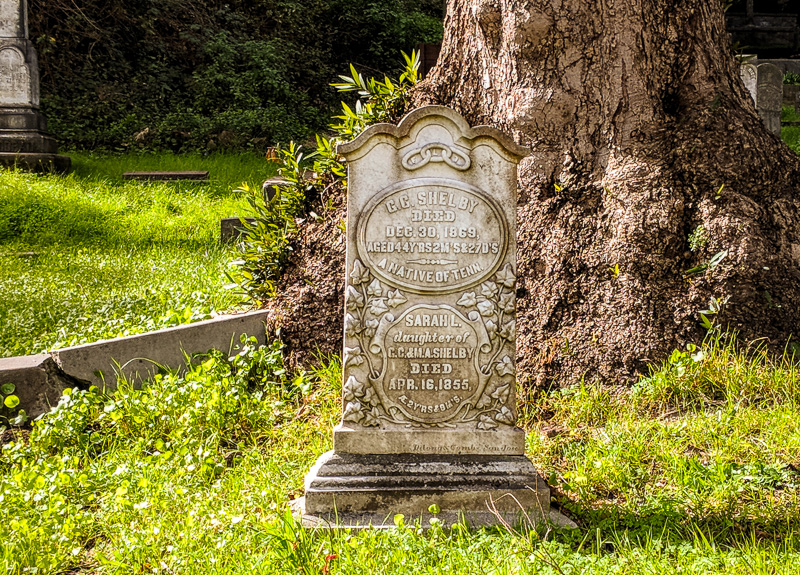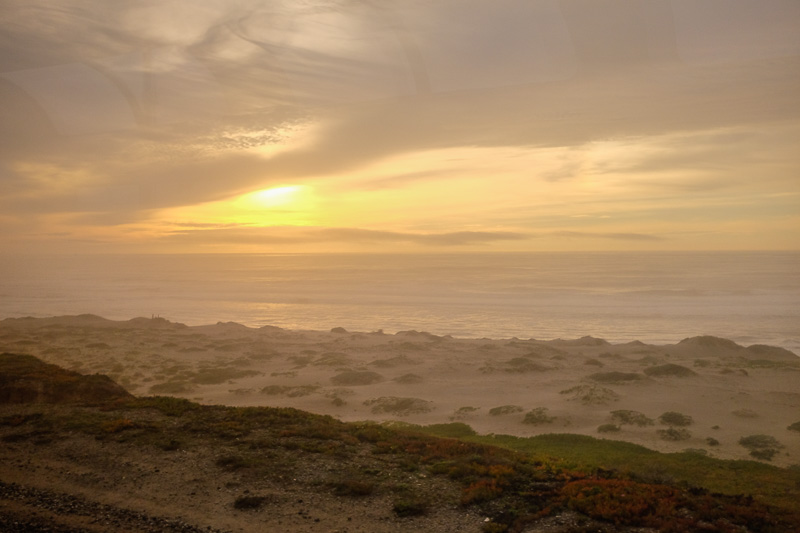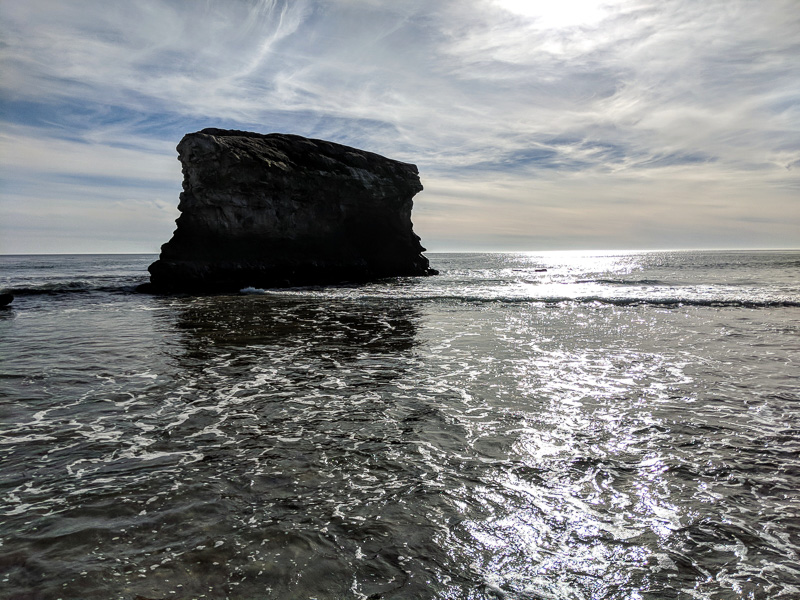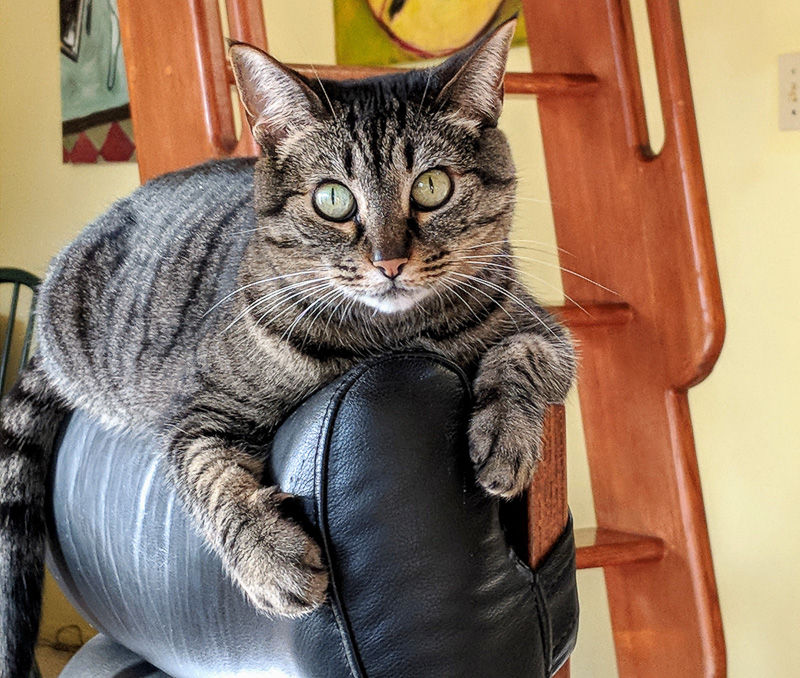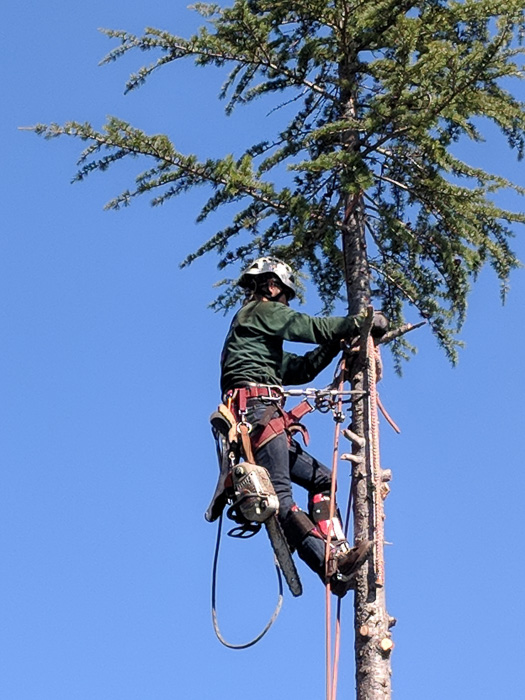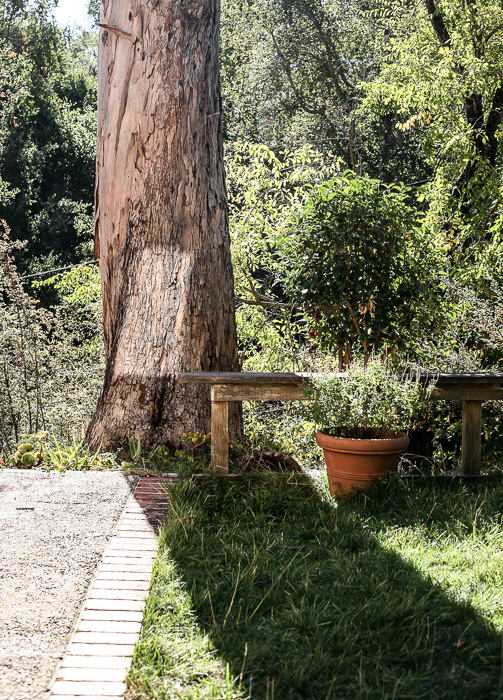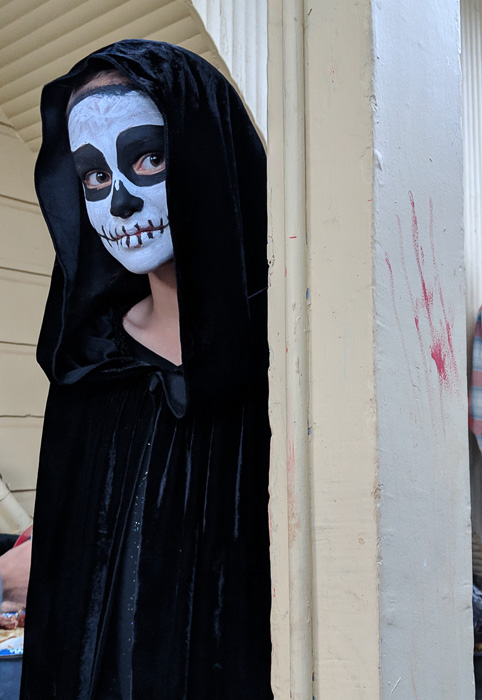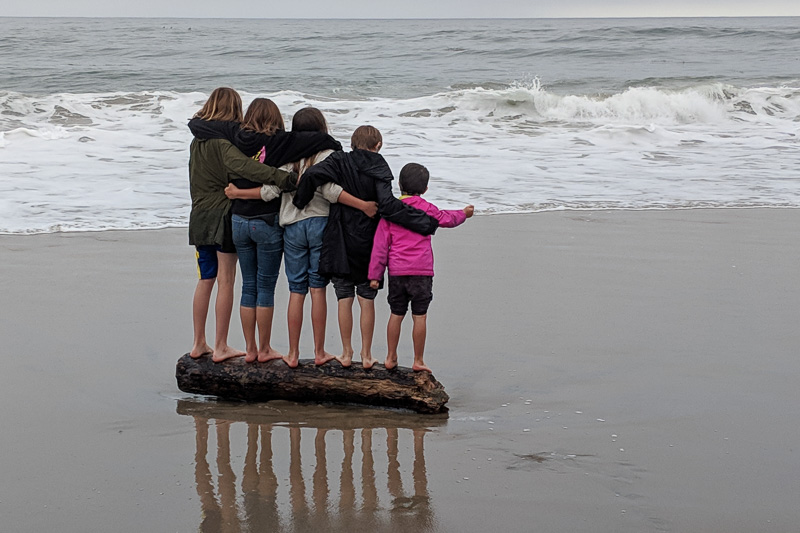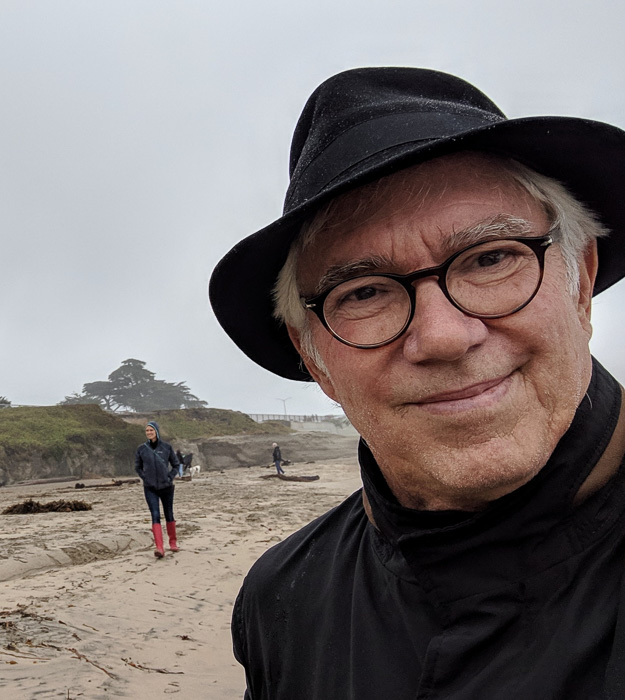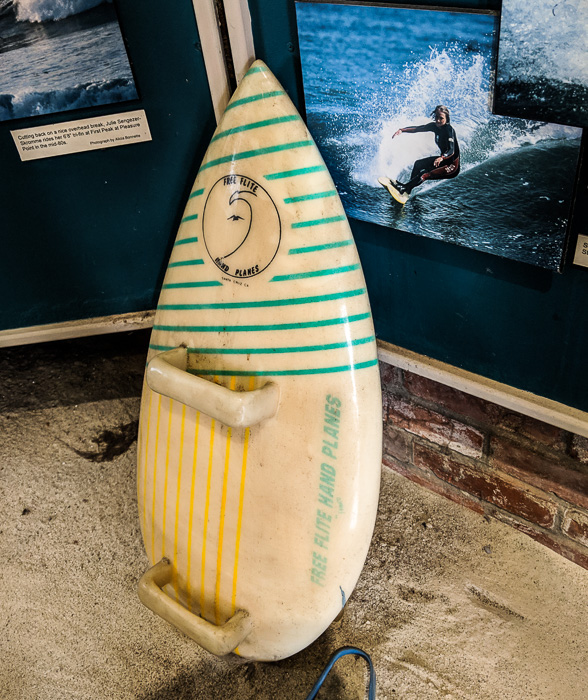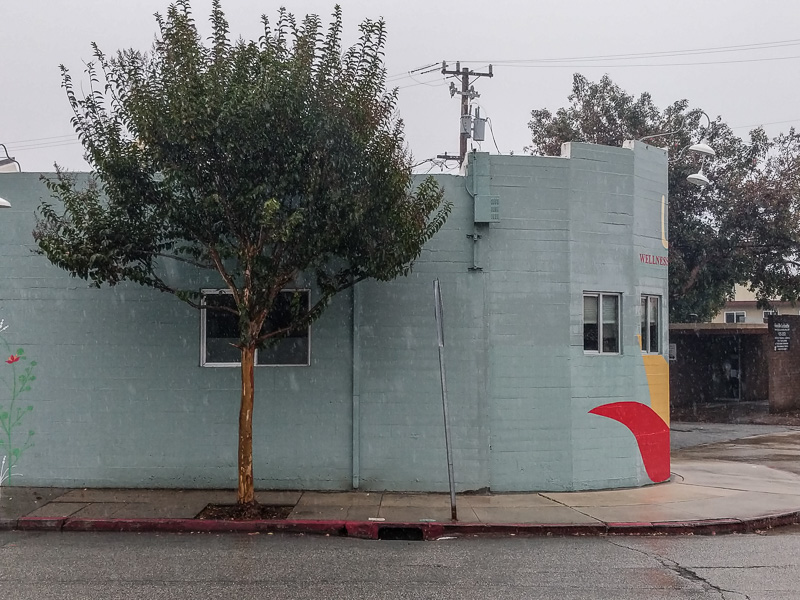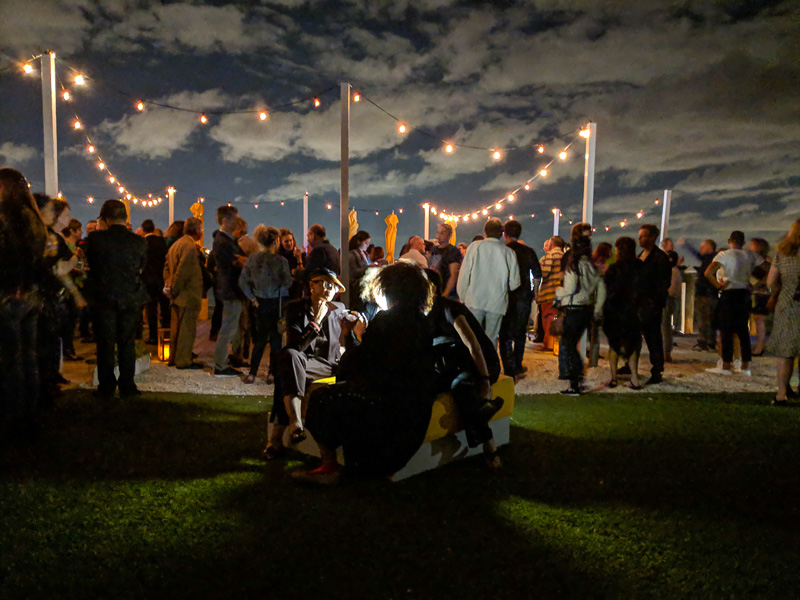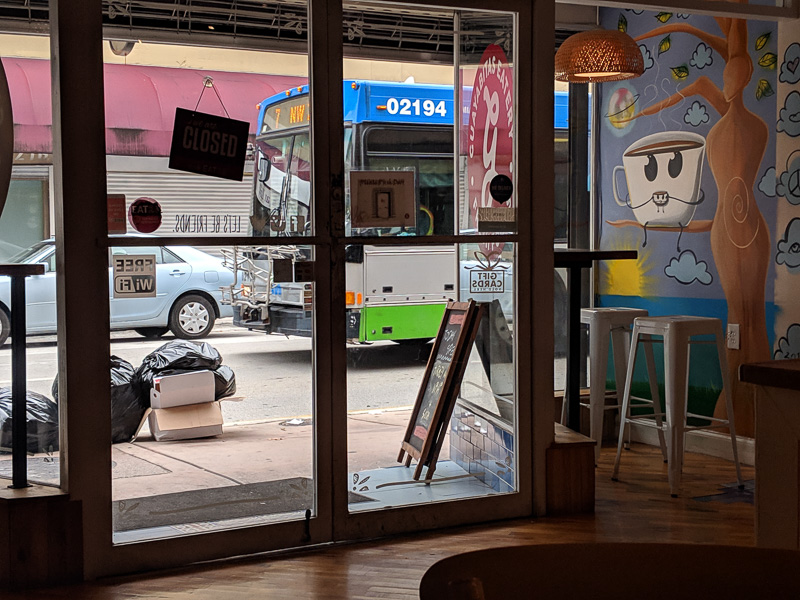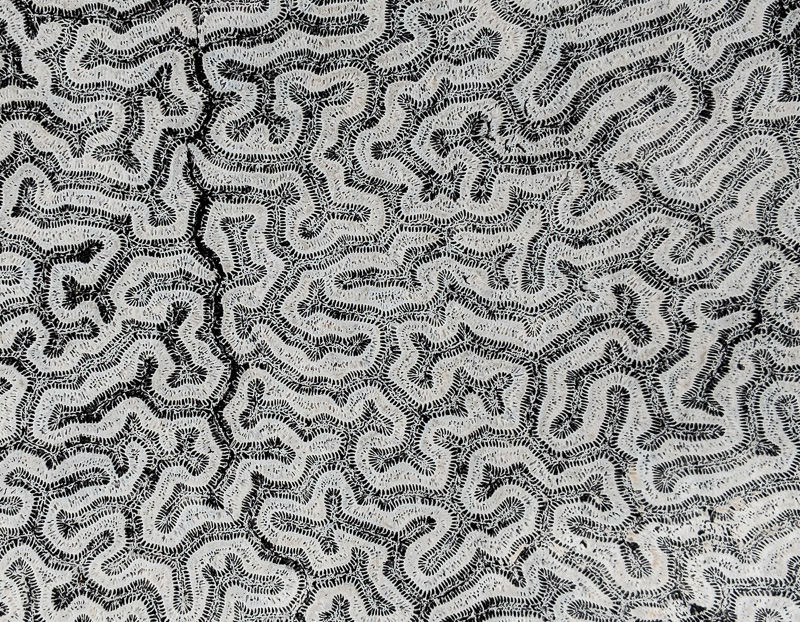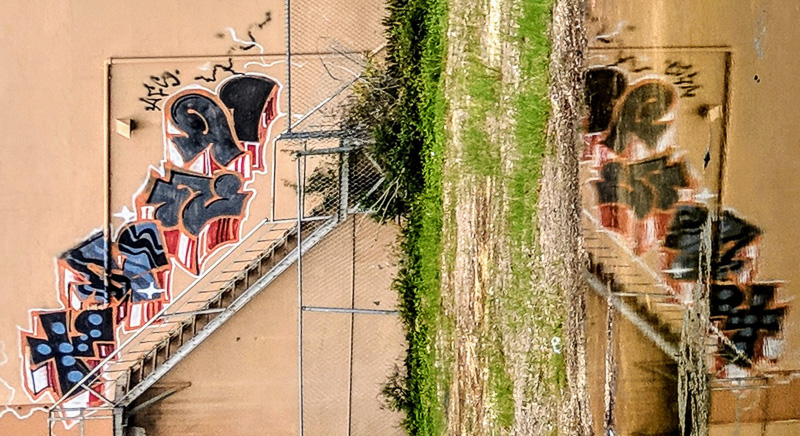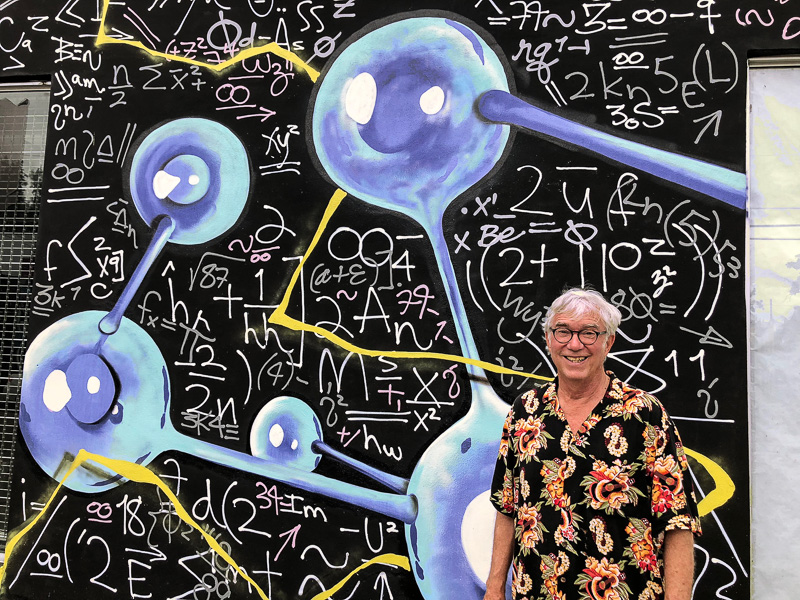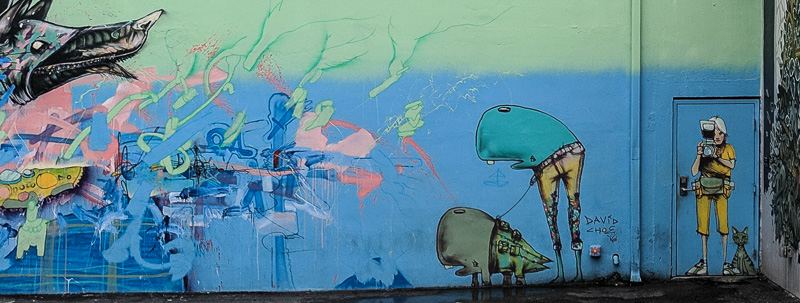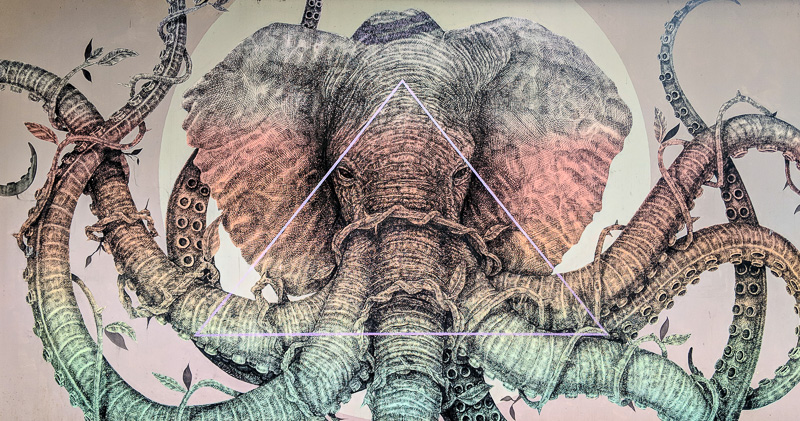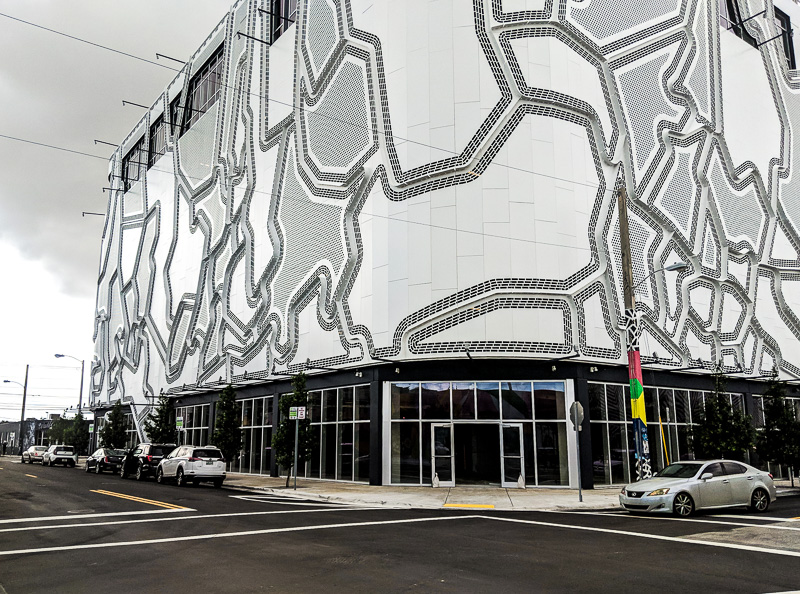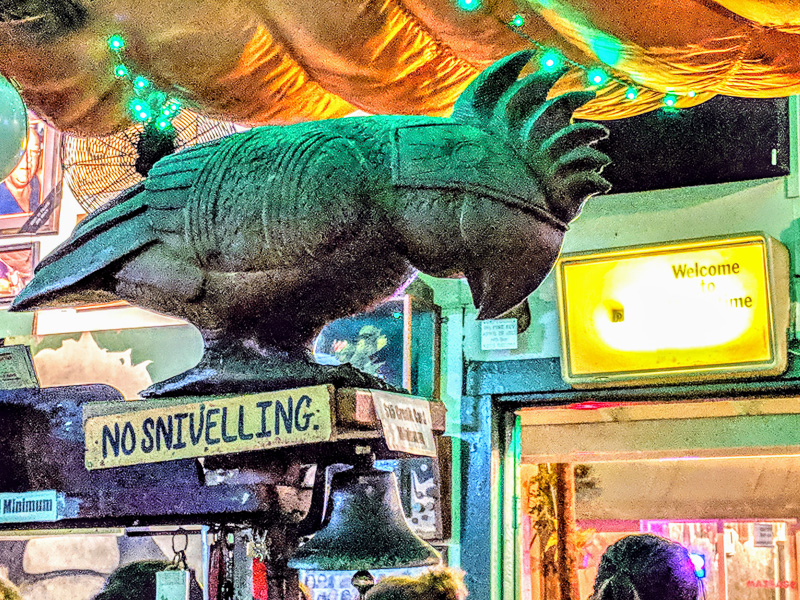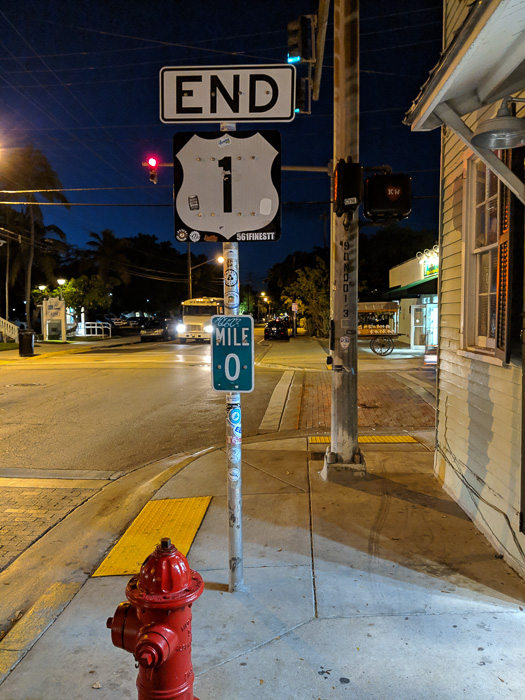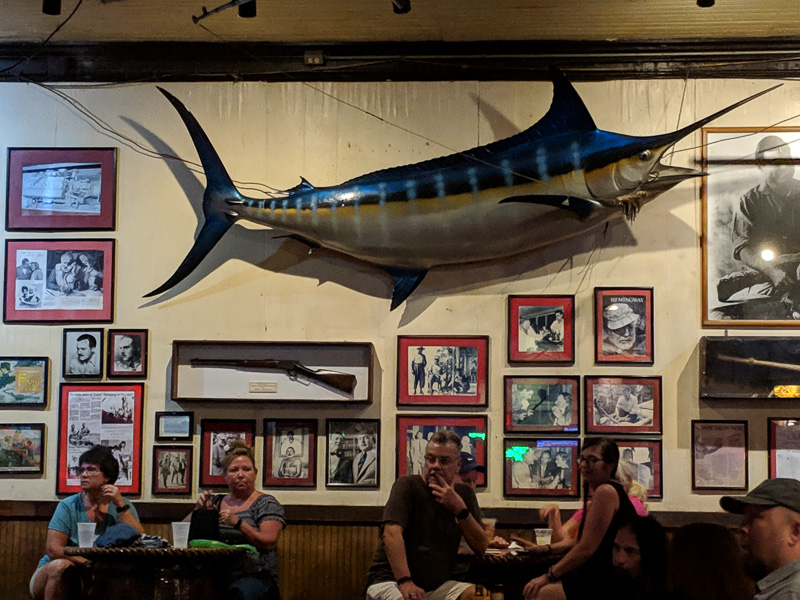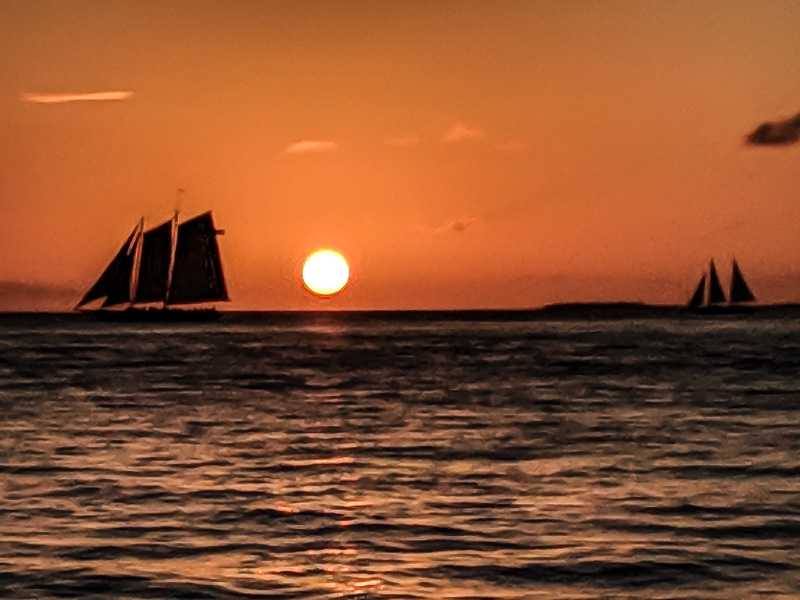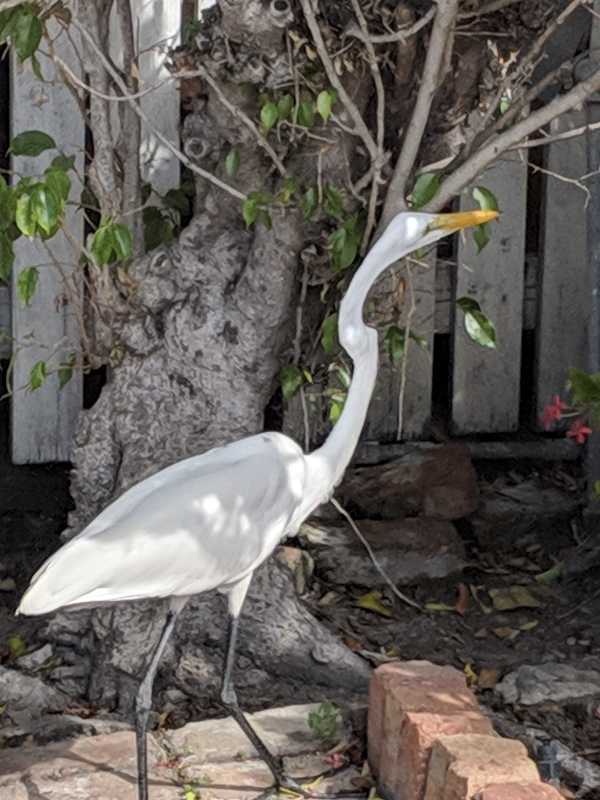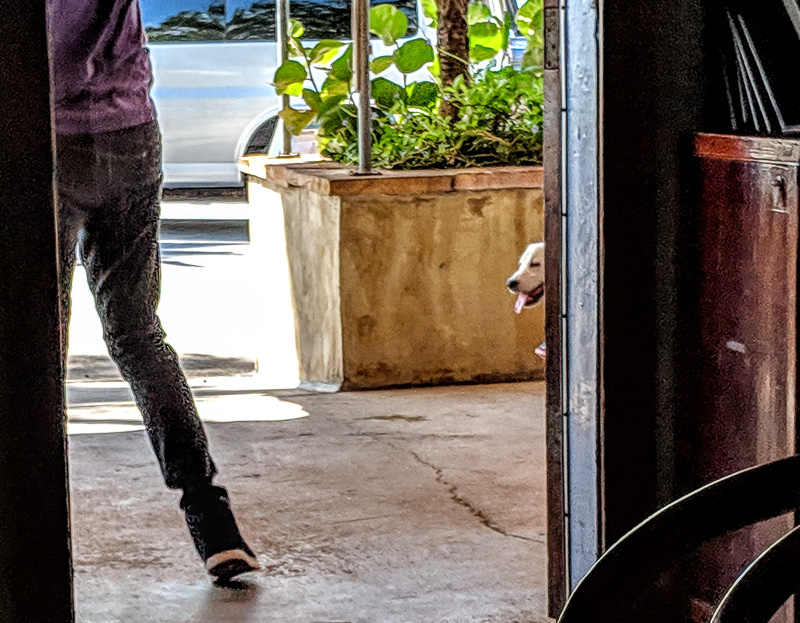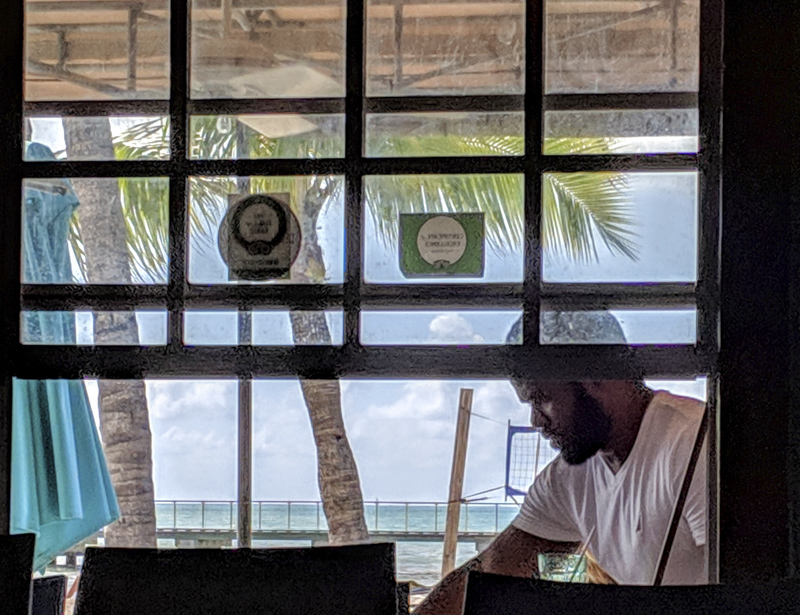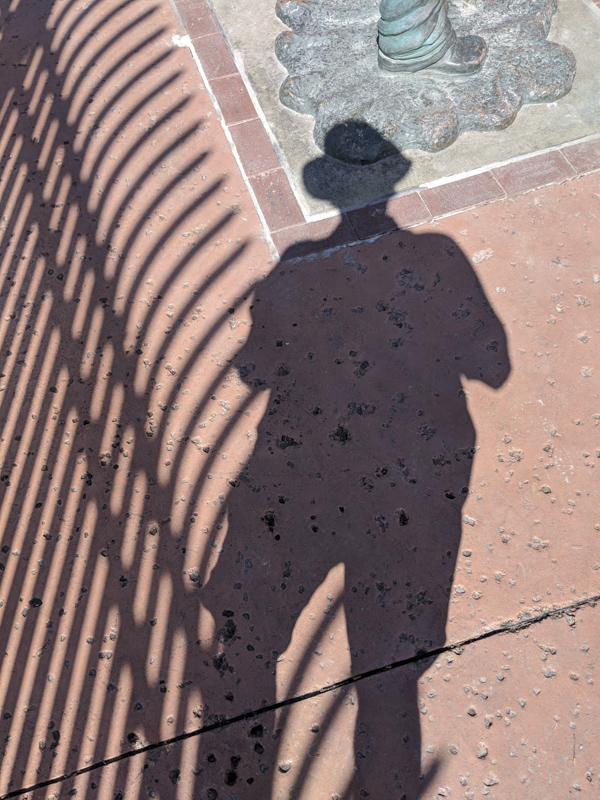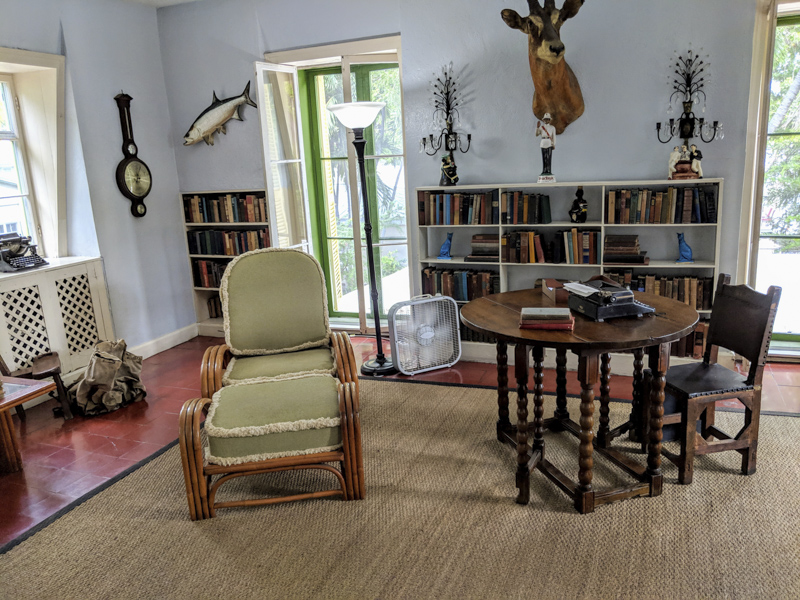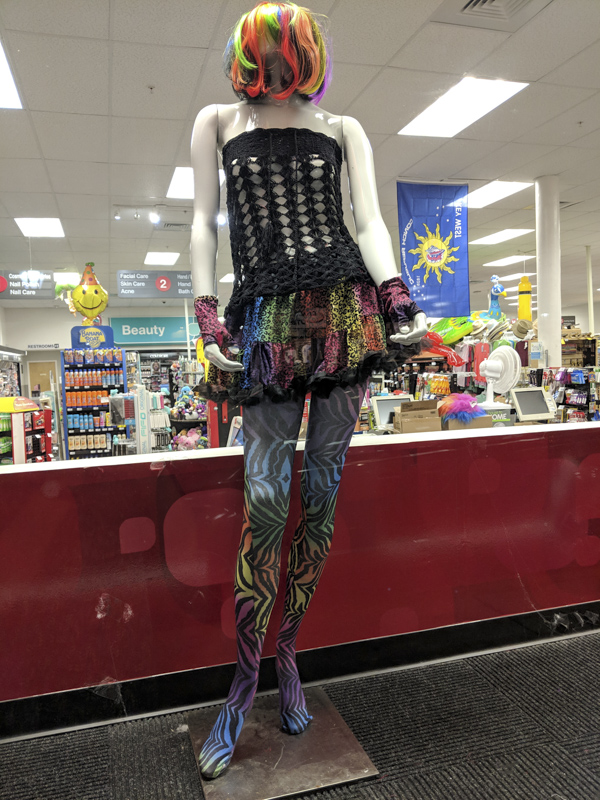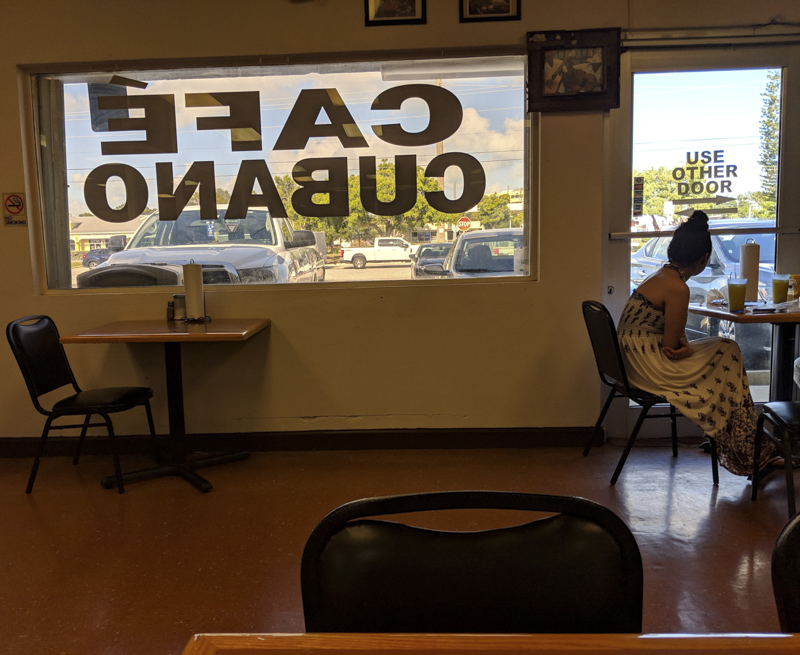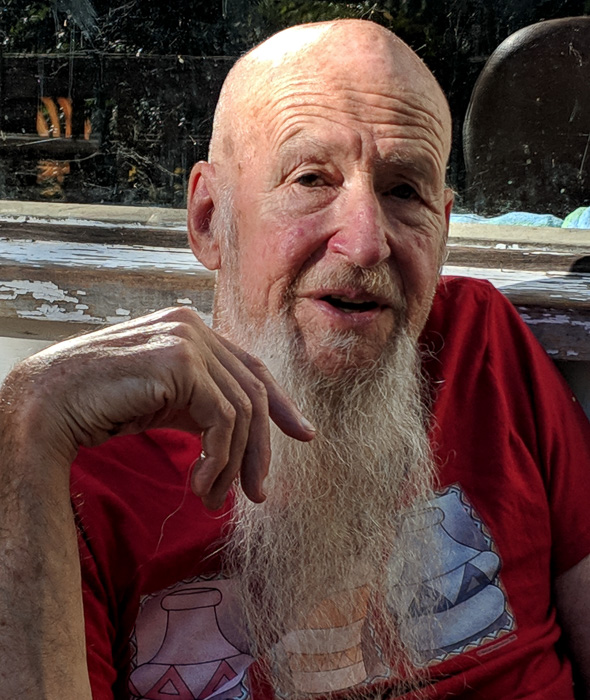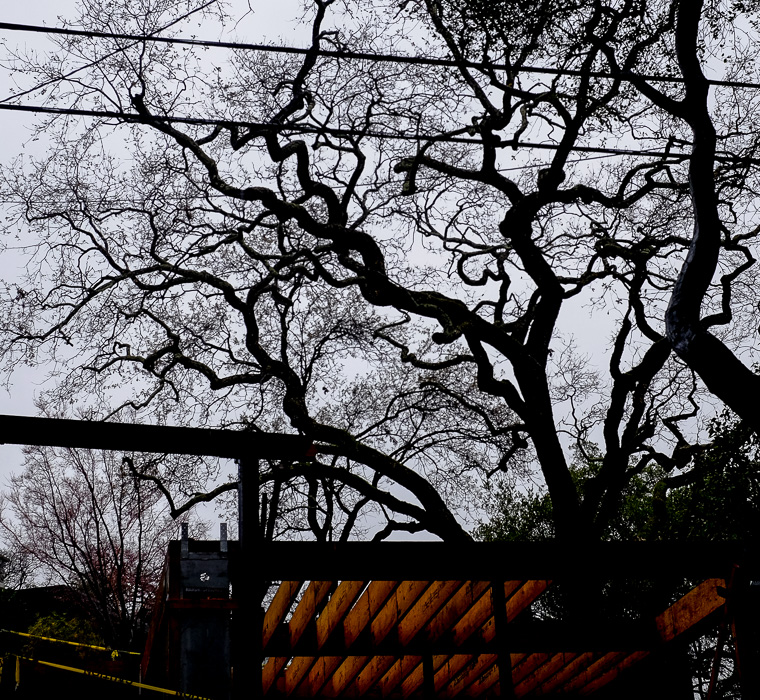
I’m really into the gnarl of the rainy weather these days.
Oak trees are in some sense smarter than other trees. They don’t just send a long branch *doink* straight out. They think it over. A little this way, a little that way, paying attention to the amount of light and air in each direction. Wiggly, man.

Whenever the rain gets heavy, I skeeve on down into this gully across the street from my house. It “belongs” to some guy in a big house up on a hill, but he doesn’t notice me. I’m down there with what’s sometimes called the “anima,” that is, the “spirit of place.” She’s singing here.

I’m having a big art show at the beloved Borderlands Cafe this month. 25 new paintings, all made since 2015. I made a poster for it. I gave a reading from my recent novel Return to the Hollow Earth at the start of the show…you can hear the reading on Rudy’s Podcasts.
Also I made a video of a little tour I gave the audience. I had the video camera dangling from my neck, so all the setting shots are of legs and chairs, but oh well….it’s hella Rudoid. It’s got a good pro-quality tape of my voice and spliced in hi-res shots of the paintings.
It felt really good to see all my paintings on the walls, and everyone was nice to me.
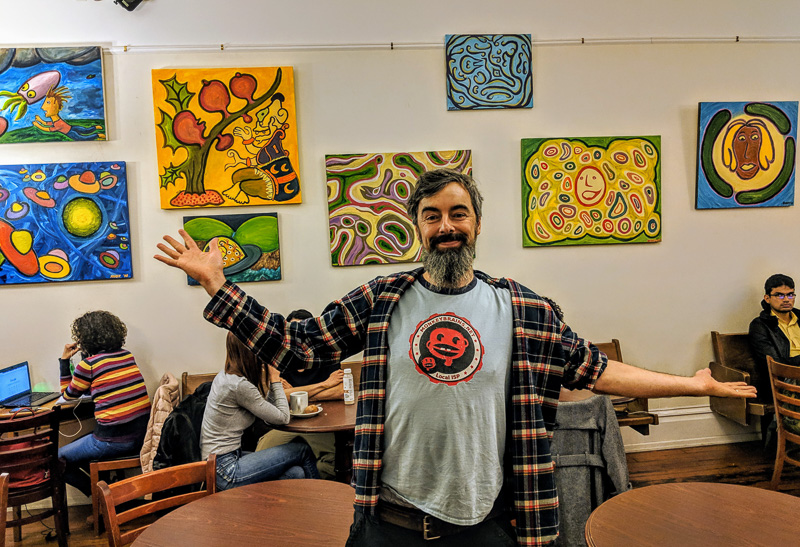
Rudy Jr. and his friend Devin helped me hang the paintings which, at this point, is more than I can handle. Standing on a stepladder and reaching is contraindicated for an old coot like me.
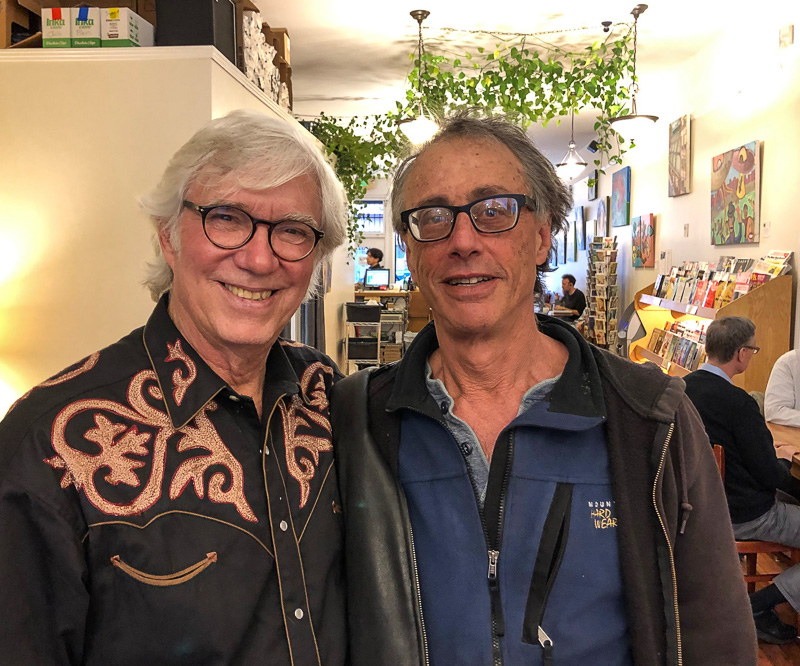
Cory Doctorow, V. Vale, Paul Mavrides and Michael Blumlein were among the celebs in attendance. Blumlein shown above. So many times I’ve seen these guys at my Borderlands shows. Paul M. always gives me good art advice.
The last show was in 2015. Time flies. Actually, if you really have some time to kill, you can see videos of all my painting shows on my paintings page. Department of “You Watch It, I Can’t.”
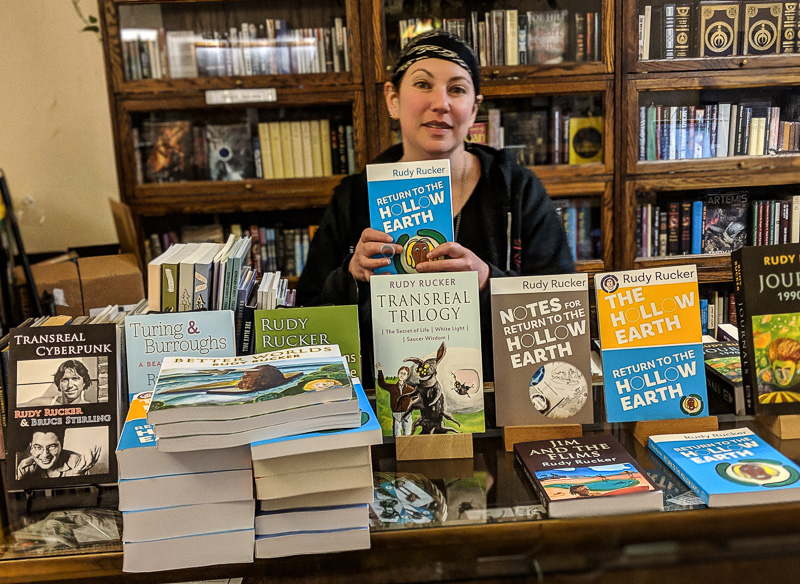
Special shout-out to Jude Feldman, who’s worked with me on all my Borderlands events, going back to, hell, the late 1980s, back when she and Alan Beatts had the store in a basement of a brick building off Hayes St., as I recall. Jude might be the only person I’ve ever known who never shows signs of impatience or irritation. And she does this while dealing with SF fans and—much harder—writers. Incredible. And Alan’s a big help too.

Back to the rain. Dig the umbrella. What a great shape.
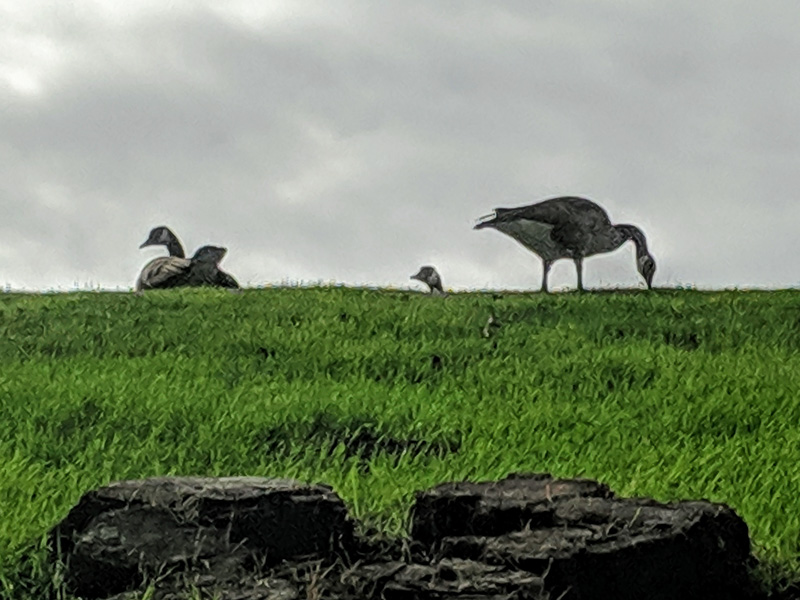
And these geese looming on the horizon (the dam at Vasona Lake). Saw a trailer for Godzilla: King of the Monsters yesterday. Looked a bit like this?

A couple of weeks ago, Sylvia and I went to the Women’s March in SF. I love these marches. I feel safe there, surrounded by like-minded people. Sylvia knit a bunch of pink “pussy hats” for the first march a couple of years ago, and now we’re down to one. I like the way one ear goes up and one ear goes down.

I borrowed the hat and wore it atop my Stetson for awhile. Once I was wearing it, Sylvia started calling it a “pig hat.” I do like to draw pig ears that particular way, one up and one down.

I like this shot at the parade, the woman and the reflection.

And this one is perfect. The women not taking any more guff.

Cool visionary-eyes graffiti on Market Street with the women going by.

Says it all. But *sob* why does “dick” have to be a bad word? Well, somehow it does have a really specific meaning in terms of male personality traits… Tyrant, mansplainer, tetchy, bullying, lacking in empathy. A dick. Sigh.
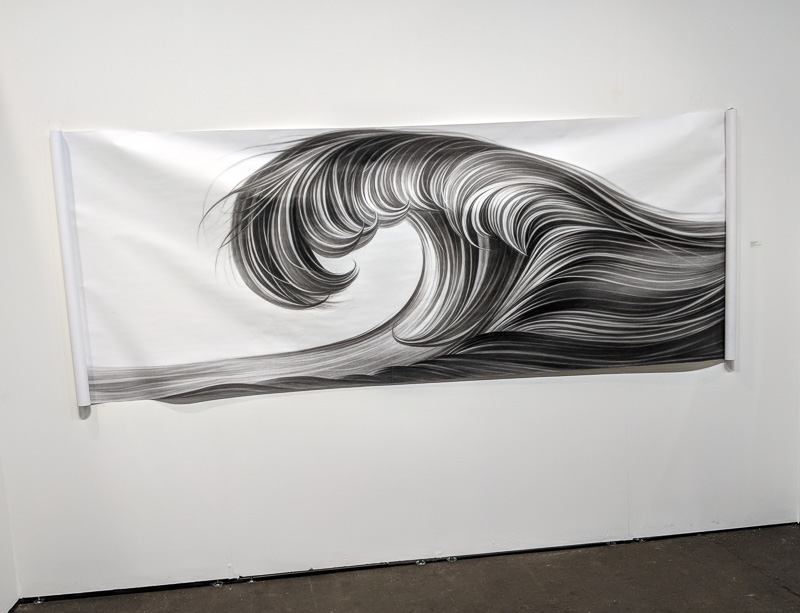
After the parade, Sylvia and hit an immense Art Fair on a giant pier, maybe #35. Someone had drawn an immense wave made of hair, like 20 feet long.

On a rare sunny day we made it down to Cruz, as is our wont. Third Ave beach was covered with driftwood…really big driftwood including logs. I don’t quite know how it all gets there…comes down the San Lorenzo River, I suppose, but usually that river looks so shallow and unassuming. Ants that we are, we humans tend to make little houses (nests) out of the wood.
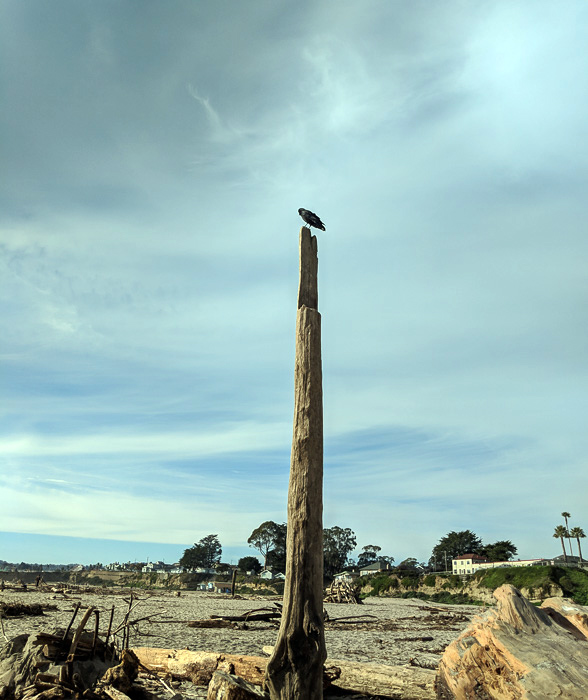
This photo is called “Cruz Crowd rift”, but I don’t remember what it is or why I took it. Oops, It’s called “Cruz Crow Drift,” and of course it’s a crow on a Cruz-ant-erected driftwood log. Love the hierophantic look it all. “This strange riparian civilization, now lost in the mists of time. In erecting this monument, it may have been that the mysterious Cruzans were…”
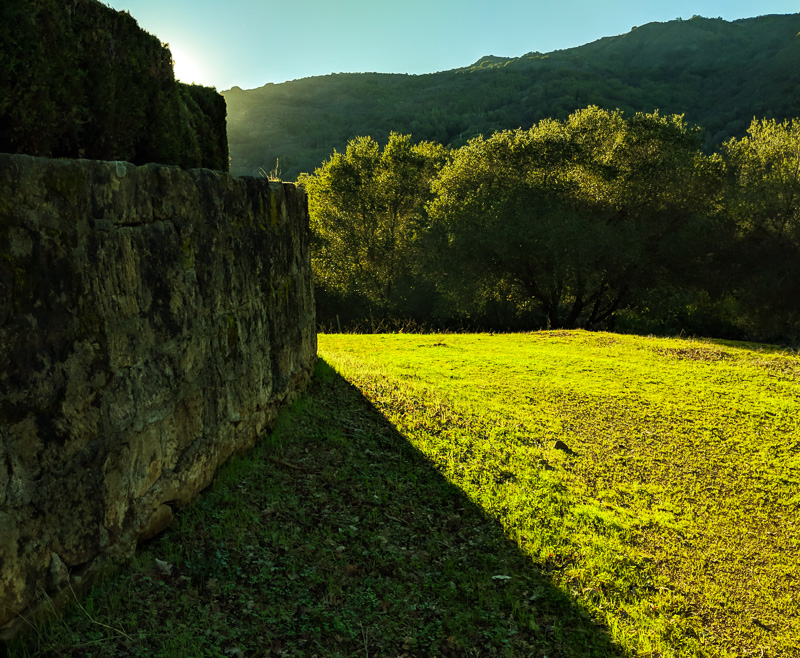
Up the hill the other day in another sunny moment. Spring just around the corner. Love how green it gets. The plants are so frikkin grateful for water.
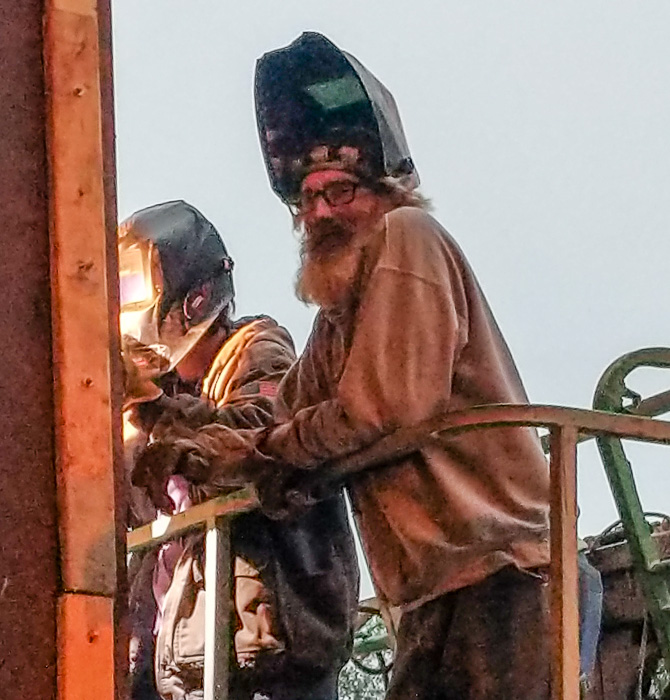
Went to Santana Row in San Ho to see Cold War yesterday, what a great movie. These two guys welding something to the window outside.
Dig the august Kenneth Turan’s review of Cold War. Kenny was my roommate at Swarthmore College about fifty-five years ago. Quote from the review:
“Given Cold War’s emotional and narrative complexity, it’s a measure of how meticulously made it is that the film clocks in at just under 90 minutes. Working closely with cinematographer Zal, Pawlikowski has pared away extraneous story moments and seen to it that the dazzling cinematography and ardent acting are in perfect balance.”
Yes! I get so sick of bloated two-and-a-half hour movies with scene after scene of people saying the same things to each other. And long conversations to explain every transition. In Cold War, one second the man and woman are looking at each other from afar, and in the next cut they’re embracing and going all the way. Get on with it! Lots and lots of story to tell.
The ending of Cold War made me so sad. The two now-doomed lovers are sitting on a bench by a rural road crossing. And she says. “Let’s go to the other side. The view is better.” And they walk out of the frame, and you realize this is a visual metaphor, and “the other side” is the Land of the Dead and they’re gone for good. Oh, Zula! (Short for Zuzanna.)

[A mossy thumb as the tree grasps the ground.]
It’s been raining again for two or three days. I went up into the woods behind St Joseph’s Hill, at the top of our street, and made my way partway up a creek bed that I like to explore. No real path along the edge, lots of rocks, branches, soft soil. I use two walking sticks, and wear boots.
Walking there with the stream full, I revelled in the physical chaos. The multiple-pendulum action of the waving branches. The intractably complex analog computations of the water’s flow. The 3D fractal clouds above, the lichen on the trunks and stones below. The moss with its endlessly various detail. The banks of bubbles around the splash-pools at the bases of cataracts.

I looked for a while at one floating pile of cataract bubbles, the pile continually replenished by new bubbles entering it from beneath. As some of the smaller bubbles below pop, they add volume to larger bubbles above. The biggest bubble grows and grows—then pops. Some of the big guys manage to last a little longer by somehow managing to shrink just a bit…not sure how they do this move. Maybe the seeming shrinkage is an illusion, it’s just that they ink a bit deeper into the pile of lesser bubbles below.
Groping for a metaphor about poeple in society here. The big bubbles are like the richer or more influential folks. The bubble pile is also a bit like the cells in my body. Nothing is as simple as it seems—and you’re frikkin dreaming if you imagine an animated 3D computer graphic can emulate our wonderful, chaotic, dripping wet Gaia.
And the cataract is so…joyous. Rapidly, but without haste, it pours down, multi-stranded, grooved, stirring up the basin, making bubbles, utterly chaotic and unpredictable.

[My old friend the mossy alligator log. He looks different but the same.]
Someone might ask me: “What is this ”˜chaos’ you’re always talking about?”
A chaotic process is something that’s non-random in the sense that it’s governed by natural law, but it’s of sufficient complexity that it’s detailed behavior is wholly unpredictable by any devices we can conceive of building. The only practical way to emulate a chaotic process is to build a physical copy of it. Or just watch the original copy that you already have. It’ll compute its state at time T by…running until time T.
The only way to find out precisely where your head will be at tomorrow is to wait until tomorrow. Because you’re chaotic. And remember, chaos is normal, chaos is the way the world naturally is, chaos is health.

What makes chaos different from brute randomness, is that, in a chaotic system, the overall behaviors and the general patterns are drawn from a limited repertoire, patterns familiar and known and expected—-although, as always, the precise details of each instant cannot be anticipated. By “general patterns” I mean things like the wagging of branches, the nodding of clusters of leaves, the bubbles at the base of the waterfall, the bumpy flow lines on the surface of a rushing stream, the back and forth oscillation of a flow, the drifting of a cloud, and so on.

[Crotch of tree. Bikini bottom.]
Human behavior has this same chaotic quality. The fine details are unpredictable. The moment-to-moment evolution of someone’s moods—–quite unfathomable. But a given individual’s overall emotional climate become knowable, and the full gamut of personalities to be found across the race is also a fact of nature that everyone learns.
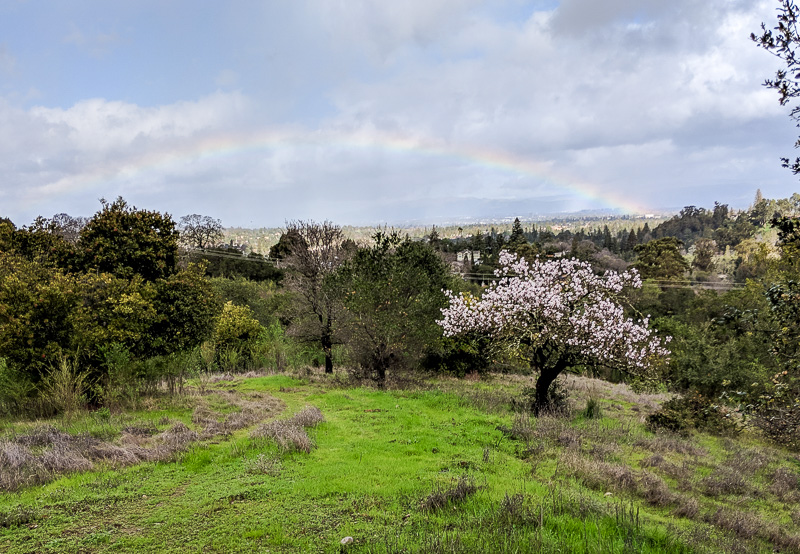
A bucolic rainbow over a stray blooming plum tree above Silicon Valley’s San Jose, yes.









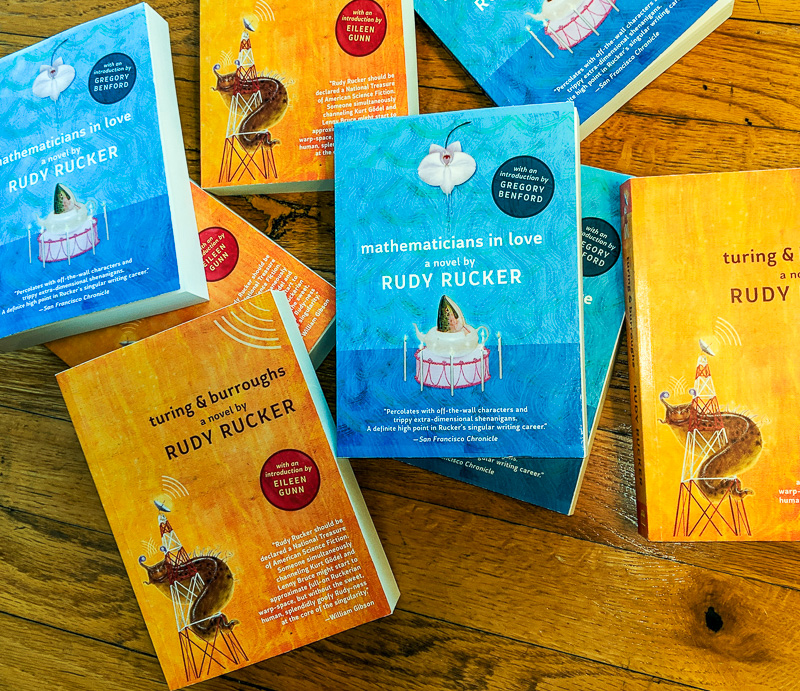

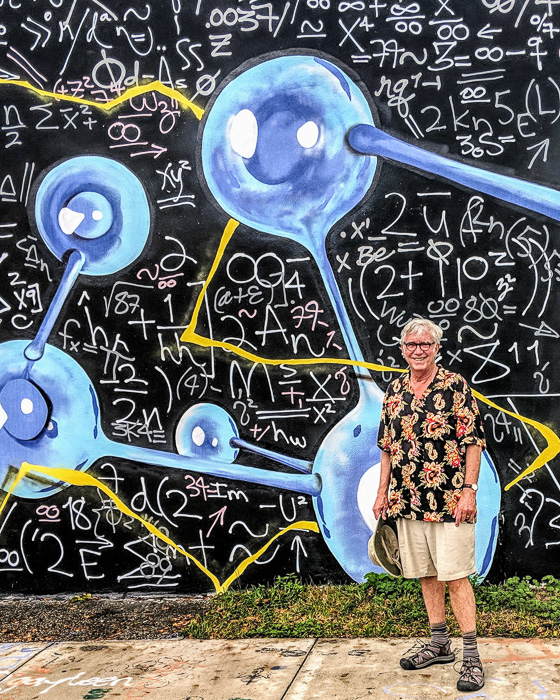





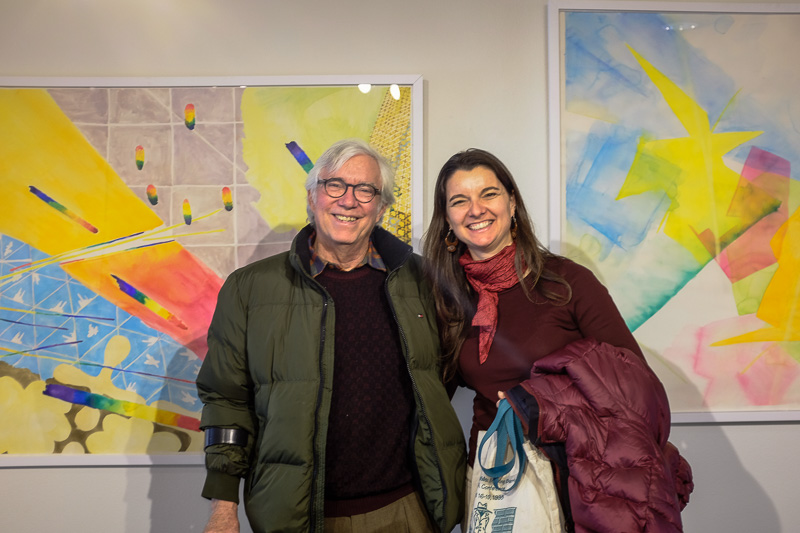





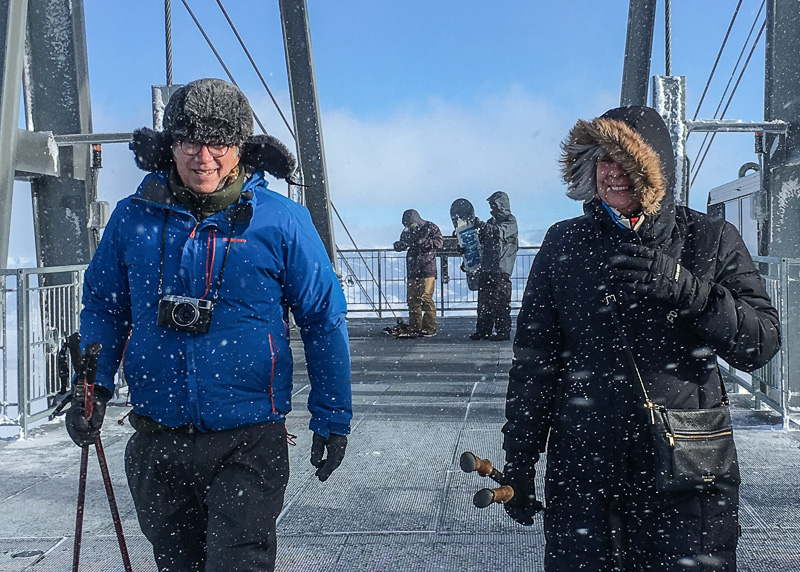


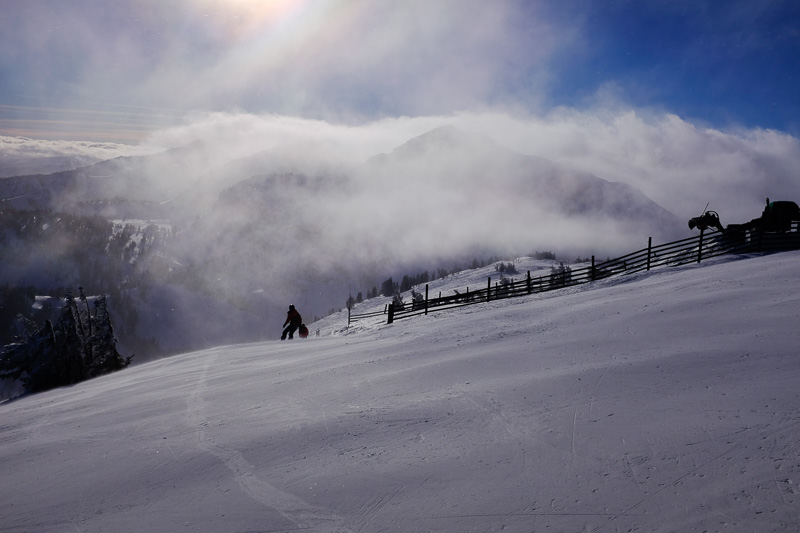











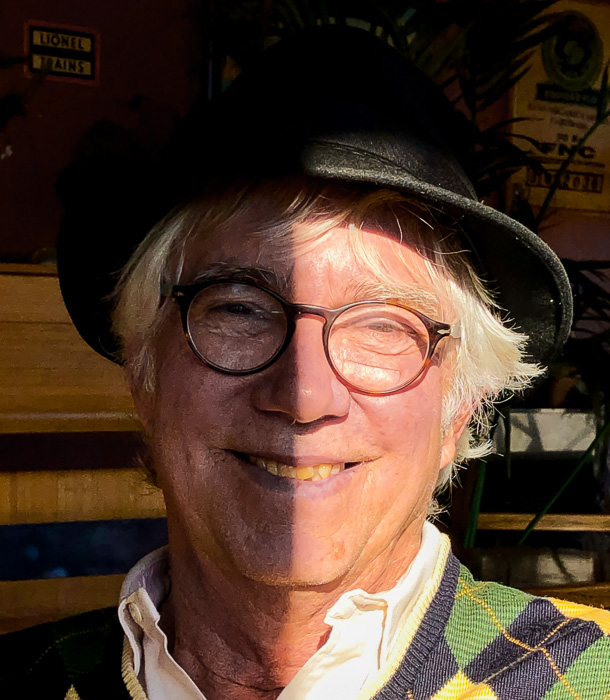


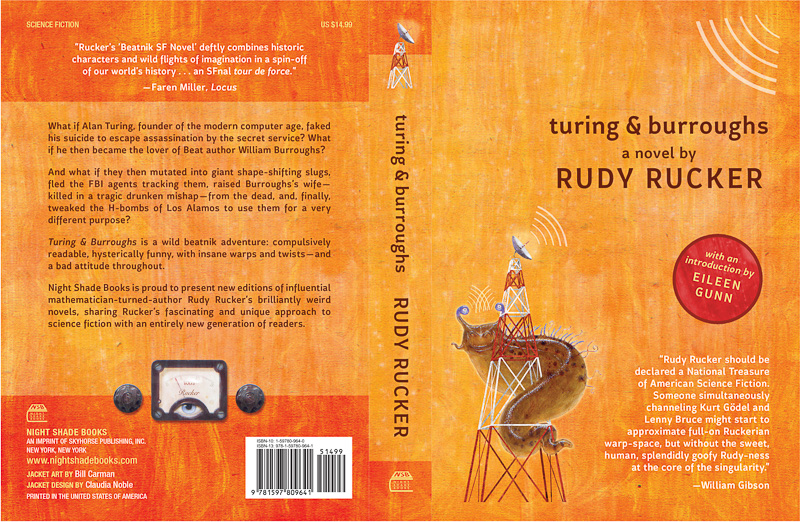
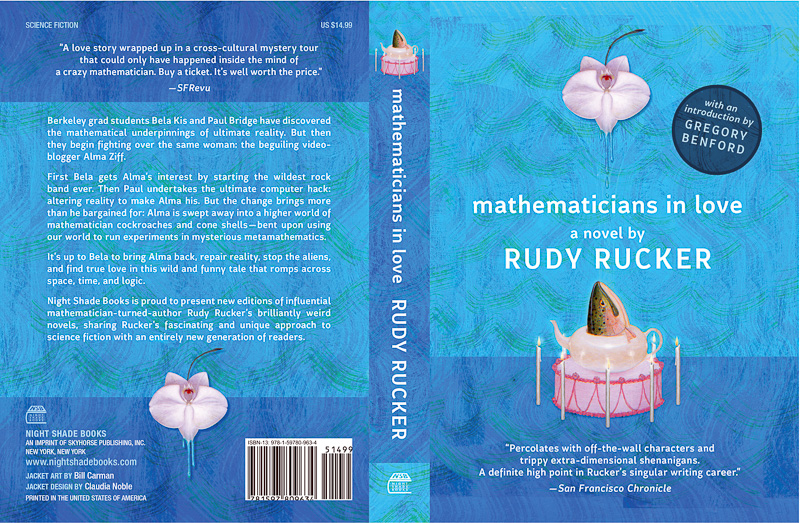
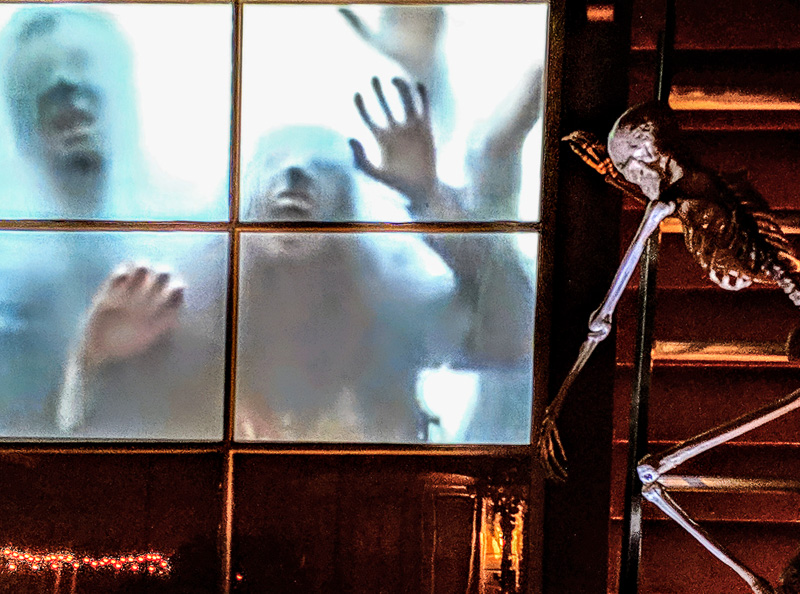
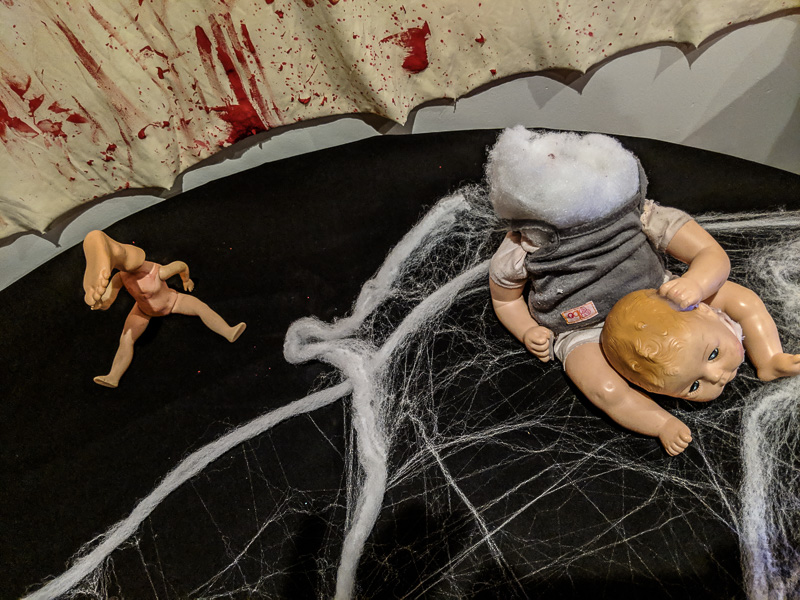


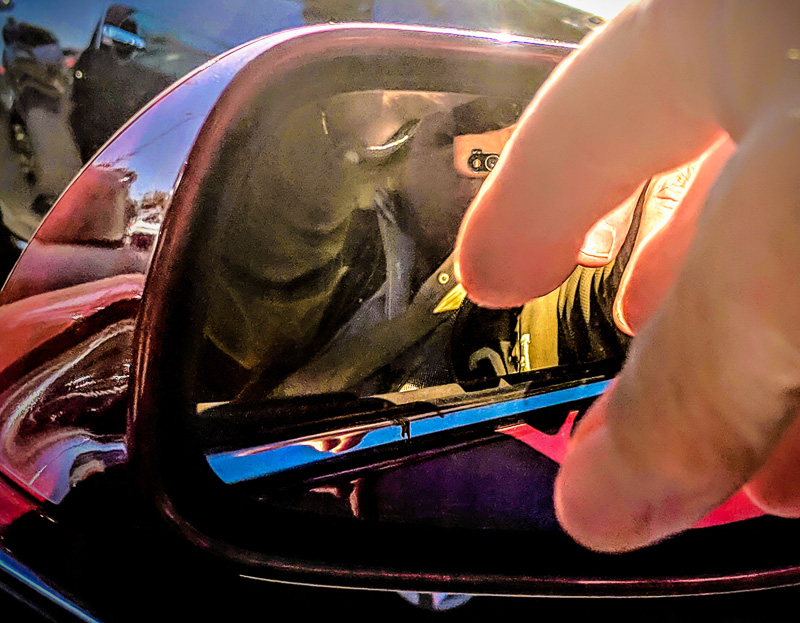
.jpg)
